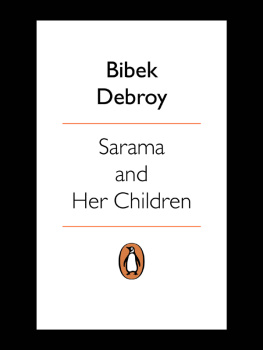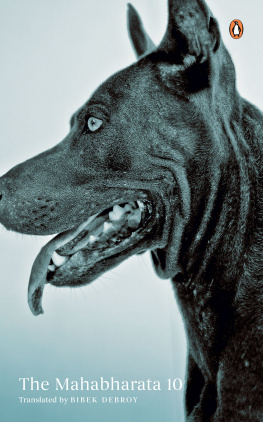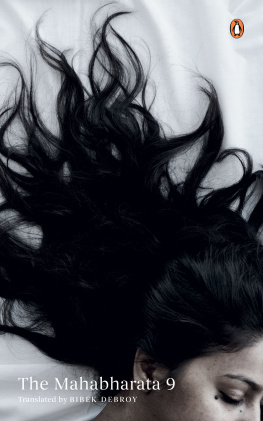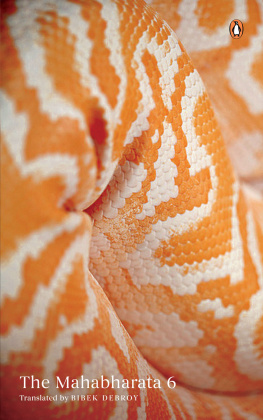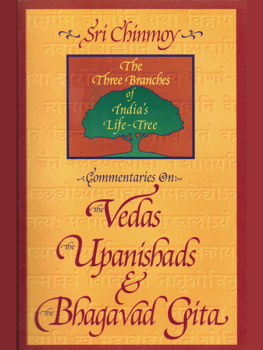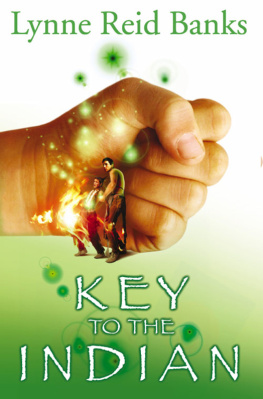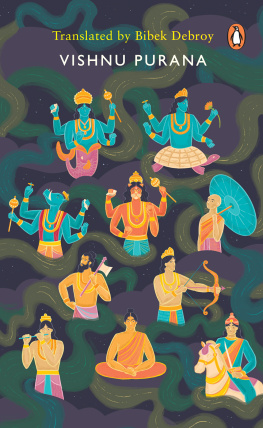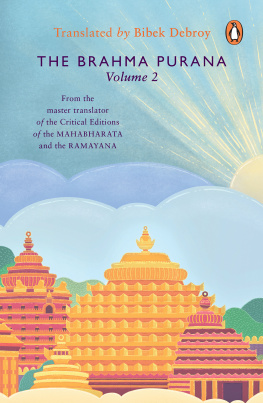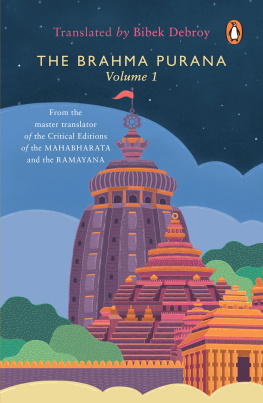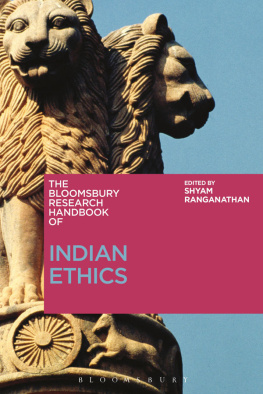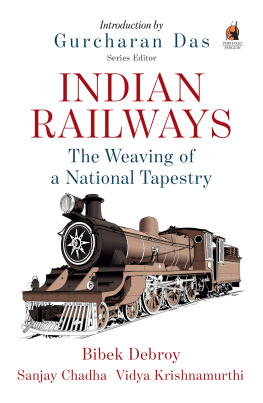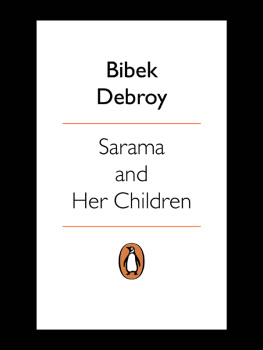Debroy - Sarama and her children: the dog in Indian myth
Here you can read online Debroy - Sarama and her children: the dog in Indian myth full text of the book (entire story) in english for free. Download pdf and epub, get meaning, cover and reviews about this ebook. City: New Delhi, year: 2013;2008, publisher: Penguin Books Ltd, genre: Detective and thriller. Description of the work, (preface) as well as reviews are available. Best literature library LitArk.com created for fans of good reading and offers a wide selection of genres:
Romance novel
Science fiction
Adventure
Detective
Science
History
Home and family
Prose
Art
Politics
Computer
Non-fiction
Religion
Business
Children
Humor
Choose a favorite category and find really read worthwhile books. Enjoy immersion in the world of imagination, feel the emotions of the characters or learn something new for yourself, make an fascinating discovery.
- Book:Sarama and her children: the dog in Indian myth
- Author:
- Publisher:Penguin Books Ltd
- Genre:
- Year:2013;2008
- City:New Delhi
- Rating:5 / 5
- Favourites:Add to favourites
- Your mark:
- 100
- 1
- 2
- 3
- 4
- 5
Sarama and her children: the dog in Indian myth: summary, description and annotation
We offer to read an annotation, description, summary or preface (depends on what the author of the book "Sarama and her children: the dog in Indian myth" wrote himself). If you haven't found the necessary information about the book — write in the comments, we will try to find it.
Sarama and her children: the dog in Indian myth — read online for free the complete book (whole text) full work
Below is the text of the book, divided by pages. System saving the place of the last page read, allows you to conveniently read the book "Sarama and her children: the dog in Indian myth" online for free, without having to search again every time where you left off. Put a bookmark, and you can go to the page where you finished reading at any time.
Font size:
Interval:
Bookmark:

The Dog in Indian Myth

PENGUIN BOOKS
PENGUIN BOOKS
UK | Canada | Ireland | Australia
New Zealand | India | South Africa
Penguin Books is part of the Penguin Random House group of companies whose addresses can be found at global.penguinrandomhouse.com.

This collection published 2008
Copyright Bibek Debroy, 2008
The moral right of the author has been asserted
ISBN: 978-0-143-06470-1
This digital edition published in 2013.
e-ISBN: 978-8-184-75970-9
This book is sold subject to the condition that it shall not, by way of trade or otherwise, be lent, resold, hired out, or otherwise circulated without the publishers prior consent in any form of binding or cover other than that in which it is published and without a similar condition including this condition being imposed on the subsequent purchaser.
PENGUIN BOOKS
Bibek Debroy is an economist and is Research Professor (Centre for Policy Research), Professor (International Management Institute) and Contributing Editor (Indian Express group). He has worked in universities, research institutes, industry and for the government. He has published books, papers and popular articles in economics. But he has also published in Indology and translated (into English) the Vedas, the Puranas, the Upanishads and the Gita (Penguin India, 2005). He is now working on an unabridged translation of the Mahabharata in ten volumes to be published as Penguin Black Classics. The book Sarama and her Children splices his interest in Hinduism with his love for dogs.
for Pari, who gave a new lease of life
Sarama has been in the making for a couple of years. In the Hindu tradition, Sarama is the mother of all dogs. She is the dog of the gods. Thus, dogs are known as sarameyas.
I have always liked dogs. In my growing-up years, a succession of dogs populated the house. Later, when I grew up and had a house of my own, there were dogs there too. Invariably, these were pure-bred Indian mongrels, usually picked up from the streets. When the first chapters were written, there were three pet dogs. Sunday and Peppy have now gone off to dog heaven. Byte is still around. And then there was Scruffy, who is dead too. She was not quite a pet. She was a happy stray, fed occasionally and looked after when she had a litter, before she was eventually taken to a vet and sterilized. At the time when the first chapters were written, Scruffys latest litter of six balls of fur were also in the house, inside a basket that kept toppling over as they tried to climb out. By the time the last chapters were written, there were more strays that were half-pets, and more puppiestwo unnamed mothers, twelve pups and three male dogswith Bori and Bhuri (now three months old) spending the occasional night on our bed.
With so many dogs that came and went, you have to be interested in dogs. The dog versus cat debate is a pointless one. I dont mind cats, but I must confess I prefer dogs. The pedigreed versus Indian mongrel debate is also largely pointless. But I must also confess I prefer mongrels. There is no reason for others to have similar preferences and there are people who do not like dogs, pedigreed or otherwise. But are these individual preferences or are there some community-level preferences determined by social cum religious norms that have evolved over thousands of years? Islams disapproval of dogs is known. How about Hinduism? Unlike the west, where an Englishman and his dog never seem to be parted, such as in depictions of Chaucers tales, a dog never seems to have a companion status in India. Indeed, the impression I had, before undertaking the research that went into this book, was stronger. I had the feeling that dogs were looked down upon in Hinduism. The incident from the Mahabharata, about the dog accompanying the Pandavas on their final journey, does not count. That was not a real dog, was it? It was Dharma disguised as a dog. Sure, there were accounts of holy men adopting dogs, but in general, dogs were looked down upon. At least, that was the impression I had and I have more than an average degree of familiarity with Hindu texts.
Imagine my surprise when I re-read the Rg Veda and discovered that dogs were used as herd dogs, hunting dogs and watchdogs, not to forget their being used as beasts of burden. I had not known that. When I had read the Rg Veda earlier, the fact had not registered. That was the trigger. And as I re-read Hindu texts with this canine perspective in mind, I continually stumbled upon facts that I had not known. A figurine from Harappa shows a dog wearing a collar. Another figurine from Mohenjodaro shows a fighting dog. The prehistoric cave paintings in Bhimbhetka (circa 5000 BCE ) show a man with a dog on a leash. India exported dogs to Alexander the Great and the Persian kings. The Valmiki Ramayana mentions dogs being bred in palaces and sent as gifts to Ayodhya. Sitas earrings were shaped like the teeth of a dog. In the Mahabharata, when Arjuna prays to Durga, the goddess is described as possessing the face of a dog. There are several Bhairava temples that not only show Bhairava surrounded by dogs, but also riding on them. In Delhi itself, there is a Bhairava temple with statues of dogs that are worshipped. There is a Raja Ravi Verma painting with the four vedas represented as dogs. The more I read, the more I marvelled. A more complicated proposition, bolstered with evidence from Bengali literature, began to emerge as the central thesis of this book. And since there were not any books on attitudes to dogs in Hinduism, these facts clearly deserved wider dissemination. The research not only involved extensive reading, it took me to all kinds of places in search of Bhairava temples and to Bhimbhetka. The book wrote itself. It was a voyage of discovery and will probably be one to the reader as well.
In the process, my attitude towards dogs has also changed a bit. Bhairava temples are often around cremation grounds, or what used to be cremation grounds earlier. And as you will discover when you read this book, there is an intimate association between dogs and cremation grounds, and between dogs and the afterlife. Bizarre and strange though it might seem, dogs take us a bit closer to the afterworld. Spend some time at a cremation ground (not the electric variety) and life seems transient and temporary, as indeed it is. It is dark. The embers on some pyre have died down. There are a million stars in the sky. And you are completely alone. Did I say completely alone? Not quite. There will be some dog by your side. Not a dog you have adopted, but one that has adopted you.
On more mundane matters, this is a book I enjoyed writing. And it is one I think you will like reading.
On less mundane matters, every book results in the accumulation of debts. First, there are my sons, Nihshanka and Vidroha, whose interest in dogs also spilled over into the progress of the dog book. Second, Dr Ranesh Chakraborty, 80-plus and Indias youngest ever medical doctor, retired cancer specialist, philatelist and Sushruta-specialist, interested in everything under the sunto him I owe a collection of dog stamps, most of which have not been used in this book. Third, friends like Latha Jishnu, Shankkar Aiyar, Pranjal Sharma, Anil Bharadwaj, Seetha Parthasarathy and Laveesh Bhandari, who parted with tit-bits of information, with the occasional snide comment about whether the next book was going to be on cats. Fourth, V.K. Karthika and R. Sivapriya of PenguinKarthika began what Sivapriya brought to completion, and without either, the book would not have happened. Fifth, modern-day Sarama, Suparna Banerjeewithout her interest and support bordering on inspiration, a book that had been languishing for a couple of years would never have been finally completed. Her enthusiasm in tracking down the Bhimbhetka cave paintings or the Heliodorus column in Vidisha or Bhairava temples or cremation grounds has been greater than mine, and also her interest in dogs. When we got out for walks in the evenings, it is quite a sight to see her followed by a motley crowd of at least a dozen stray dogs and puppies on an average, Bori and Bhuri the present favourites and Laawaris the least liked. Thank you, everyone.
Font size:
Interval:
Bookmark:
Similar books «Sarama and her children: the dog in Indian myth»
Look at similar books to Sarama and her children: the dog in Indian myth. We have selected literature similar in name and meaning in the hope of providing readers with more options to find new, interesting, not yet read works.
Discussion, reviews of the book Sarama and her children: the dog in Indian myth and just readers' own opinions. Leave your comments, write what you think about the work, its meaning or the main characters. Specify what exactly you liked and what you didn't like, and why you think so.

